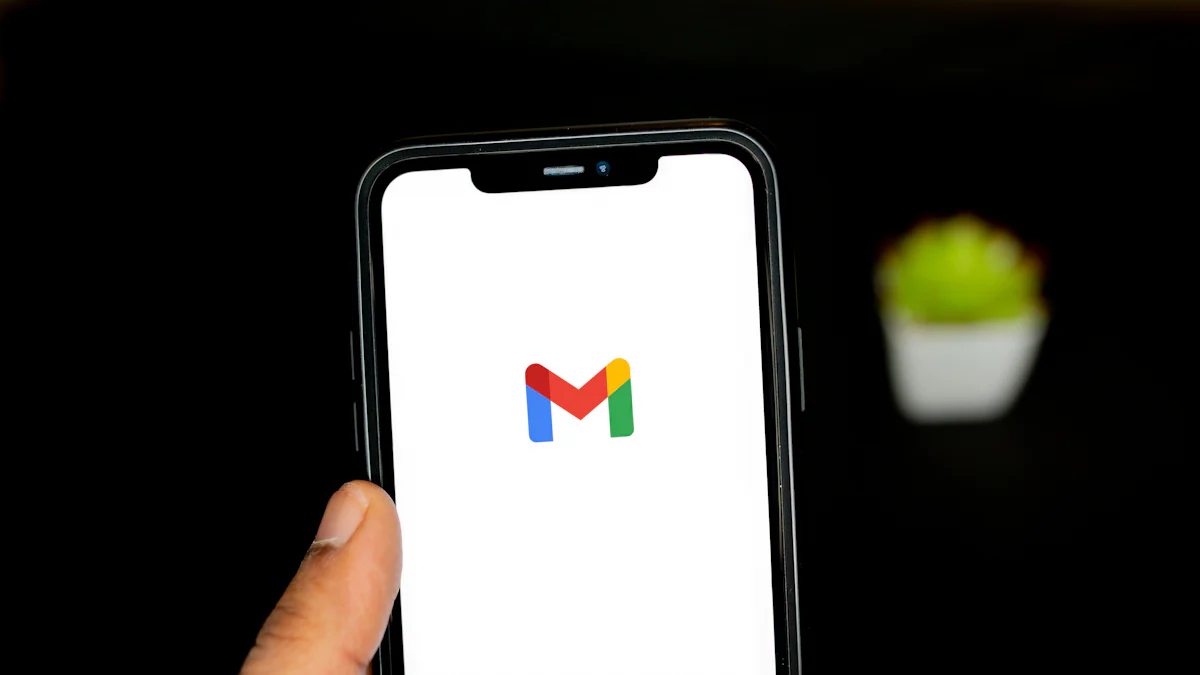Personalized vs Automated Outreach Methods for Limited Talent Pools

Recruiting in limited talent pools presents unique challenges. You often face a shortage of skilled candidates, with 90% of hiring managers reporting difficulties in finding qualified talent. Employers also experience or anticipate talent shortages, affecting 87% of organizations. On average, it takes 11 weeks to fill a position in 2023.
Statistic | Value |
|---|---|
Average time-to-fill | 11 weeks in 2023 |
Hiring managers struggling to find skilled candidates | 90% |
Employers experiencing or expecting a talent shortage | 87% |
Balancing personalized and automated outreach is crucial in this context. Personalized methods help you build meaningful connections, while automation improves efficiency. The key question remains: which approach works best for limited talent outreach, and how can you combine them effectively?
Key Takeaways
Personalized outreach helps build trust with candidates. Custom messages show you value their skills and experiences.
Automated outreach saves time and works on a large scale. It helps you contact many candidates quickly, perfect for big hiring needs.
Using both methods gives a balanced plan. Automate simple tasks and use personal messages for top candidates to keep them interested.
Personal messages get more replies. Emails with custom subject lines can raise engagement by 30%.
Think about your hiring goals to pick the best method. A mix of both can reach more people and keep connections meaningful.
Personalized Outreach in Limited Talent Outreach

Defining Personalized Outreach
Characteristics of personalized outreach
Personalized outreach involves crafting messages that resonate directly with candidates. It highlights their achievements and aligns their skills with your company’s values. This approach fosters meaningful interactions and differentiates your brand in a competitive market. Personalized communication also enhances candidate profiling by allowing you to address specific needs and preferences. Additionally, it increases the likelihood of referrals from satisfied candidates. Flexibility in communication is another hallmark, enabling you to adapt your approach based on individual circumstances.
Examples of personalized communication in recruiting
Recruiters often use tailored emails or LinkedIn messages to mention specific candidate achievements. For instance, referencing a candidate’s recent project success can make your outreach more engaging. A study by Jobvite revealed that 43% of candidates are more likely to respond to a recruiter’s text than an email, emphasizing the value of SMS in personalized communication. Personalized messages also help recruiters understand candidates’ career goals better, creating higher-quality interactions. This strategy not only builds rapport but also positions your company as genuinely interested in candidates’ growth.
Benefits of Personalized Outreach
Building trust and meaningful connections
Personalized outreach builds trust by showing candidates that you value their unique skills and experiences. When you tailor your communication, candidates feel appreciated and understood. This approach helps establish meaningful connections, which can lead to long-term relationships. Candidates are more likely to engage with companies that demonstrate genuine interest in their professional journey.
Higher engagement and response rates
Personalized outreach significantly boosts engagement. For example, emails with personalized subject lines see a 30.5% increase in response rates, while personalized body copy raises responses by 32.7%. Using personalization tokens like names or industries creates individualized experiences that resonate with candidates. These strategies ensure your messages stand out, especially in limited talent outreach scenarios.
Challenges of Personalized Outreach
Time and resource constraints
Personalized outreach demands significant time and resources. Crafting tailored messages for each candidate can overwhelm smaller teams. Budget constraints often limit your ability to invest in robust outreach programs. Additionally, managing data effectively to personalize communication and track market trends can be challenging.
Difficulty in scaling for larger campaigns
Scaling personalized outreach for larger campaigns presents unique hurdles. Customizing messages for a vast candidate pool is time-intensive and risks inconsistency in messaging. This inconsistency can confuse candidates and dilute your brand’s message. Maintaining a personal touch with many candidates is also difficult, which may extend the recruitment process. Furthermore, personal biases in communication could unintentionally affect diversity within your talent pool.
Automated Outreach for Recruiting Efficiency

What Is Automated Outreach?
Key features of automated outreach tools
Automated outreach uses technology to streamline communication with candidates. These tools offer expansive reach, allowing you to connect with thousands of candidates in minutes. They ensure consistent engagement by automating follow-ups, such as sending reminders or updates. Analytics features provide insights into candidate behavior, helping you refine your strategies. For example, you can track how many recipients opened your emails or clicked on links. Automation also reduces recruitment costs by eliminating repetitive tasks. Additionally, integrated tracking systems simplify monitoring candidates’ progress throughout the hiring process.
Examples of automation in recruitment
Automation supports various recruitment tasks. Resume filtering tools help you identify qualified candidates quickly. Applicant outreach systems send bulk emails or messages efficiently. Interview scheduling software eliminates back-and-forth communication by allowing candidates to book slots directly. AI-driven tools assist with sourcing candidates from databases or social media. Onboarding tools streamline the process of welcoming new hires, ensuring a smooth transition into your organization.
Advantages of Automated Outreach
Scalability and efficiency for broad campaigns
Automated outreach excels in managing large-scale recruitment efforts. A single email campaign can reach thousands of candidates with minimal effort. Unlike manual methods, automation scales effortlessly as your business grows. It also saves time by handling repetitive tasks, such as sending follow-up messages or scheduling interviews. Compared to manual outreach, automation offers unmatched efficiency and scalability, making it ideal for broad campaigns.
Cost-effectiveness in repetitive tasks
Automation reduces labor costs by minimizing the need for manual intervention. Tasks like resume screening or sending status updates become faster and more affordable. For instance, automating proposal processes can cut timelines from weeks to hours. This cost-effectiveness allows you to allocate resources to other critical areas, such as candidate engagement or employer branding.
Limitations of Automated Outreach
Risk of impersonal communication
Automated messages often lack a personal touch, which can make candidates feel undervalued. Overusing automation may result in robotic communication that harms your brand’s reputation. Candidates might perceive these messages as spam, leading to lower engagement rates. To avoid this, you should balance automation with personalized elements.
Lower engagement in niche or specialized talent pools
Automation struggles to connect with candidates in highly specialized fields. These individuals often expect tailored communication that reflects their unique skills and experiences. Generic messages may fail to resonate, reducing the effectiveness of your outreach. For niche talent pools, relying solely on automation could limit your ability to build meaningful relationships.
Comparing Personalized and Automated Outreach
Efficiency and Scalability
How each method performs in terms of speed and reach
When it comes to efficiency and scalability, personalized and automated outreach methods differ significantly. Personalized outreach requires a substantial time investment for each candidate. Crafting tailored messages and maintaining one-on-one communication can slow down the process. This approach also limits scalability, as it depends on the availability of your team.
In contrast, automated outreach offers unmatched efficiency. Automation tools handle bulk messaging and follow-ups with minimal effort. They allow you to reach thousands of candidates in minutes, making them ideal for large-scale campaigns. These tools adapt to growth seamlessly, ensuring scalability as your recruitment needs expand.
Outreach Method | Efficiency | Scalability |
|---|---|---|
Manual Outreach | Requires significant time investment per contact; less efficient due to time-consuming nature. | Limited by available manpower and time; less scalable. |
Automated Outreach | Handles bulk messaging and follow-ups with minimal effort; excels in efficiency and time management. | Easily manages increasing volumes of contacts; highly scalable and adapts to growth. |
Personalization and Candidate Experience
The impact of each method on candidate relationships
Personalized outreach creates stronger connections with candidates. Tailored messages lead to meaningful conversations, helping you understand candidates’ career goals. This approach also differentiates your brand by showing genuine interest in their growth. Satisfied candidates often refer others, expanding your recruitment opportunities.
However, personalized outreach can be resource-intensive. Customizing messages for each candidate takes time and effort, which may overwhelm smaller teams. Scaling this approach risks inconsistency in messaging, potentially confusing candidates.
Automated outreach, while efficient, often lacks the personal touch. Generic messages may feel impersonal, reducing engagement. Candidates in specialized fields may expect tailored communication, which automation struggles to provide. Balancing automation with personalized elements can help improve candidate experience.
Higher quality interactions: Tailored messages foster meaningful conversations.
Brand differentiation: Personalized outreach highlights your genuine interest.
Increased referral potential: Satisfied candidates are more likely to refer others.
Enhanced candidate profiling: One-on-one interactions reveal more about candidates.
Flexibility in communication: Messages can address specific concerns effectively.
Cost-Effectiveness
Balancing budget constraints with outreach goals
Automated outreach proves more cost-effective over time. It reduces labor costs by automating repetitive tasks like follow-ups and scheduling. For large-scale campaigns, automation minimizes resource needs, allowing you to allocate funds elsewhere.
Personalized outreach, while impactful, involves higher costs. Crafting individual messages requires more personnel and extended working hours. This approach may strain your budget, especially for smaller teams.
Outreach Method | Cost Implications |
|---|---|
Automated Outreach | Reduces labor costs and resource needs; more cost-effective over time, especially for large-scale campaigns. |
Manual Outreach | Involves higher labor costs and resource allocation; increased costs for additional personnel or extended working hours. |
To balance budget constraints, prioritize activities that align with your outreach goals. Leveraging digital tools can expand your reach while reducing costs. Partnerships and in-kind support can also provide additional resources without increasing expenses.
Best Fit for Limited Talent Outreach
Evaluating which method works best for small, specialized talent pools
When recruiting in small, specialized talent pools, you need to carefully evaluate the strengths of both personalized and automated outreach methods. Each approach offers unique advantages, but their effectiveness depends on how you apply them to your recruitment strategy.
A blended approach often works best in limited talent outreach. Automation can handle repetitive tasks like sending initial emails or scheduling interviews. This saves time and ensures efficiency when managing high application volumes. However, personalized communication becomes essential when engaging strong candidates. Tailored messages allow you to highlight their unique skills and align them with your company’s goals. This combination creates a more engaging candidate experience while maintaining efficiency.
Knowing when to use each method is key. Automated outreach is ideal for initiating contact with a broad audience. It allows you to quickly identify candidates who show interest or potential. Once you identify promising candidates, switching to personalized follow-ups helps build stronger connections. For example, you can reference specific achievements or career goals in your messages. This approach demonstrates genuine interest and increases the likelihood of a positive response.
In small, specialized talent pools, candidates often expect a personal touch. Generic messages may fail to resonate, making personalized outreach more effective in these scenarios. However, relying solely on manual methods can strain your resources. By automating administrative tasks and reserving personalized communication for critical moments, you can balance efficiency with meaningful engagement.
Ultimately, the best fit depends on your recruitment goals and the characteristics of your talent pool. Combining automation with personalization allows you to maximize your reach while maintaining a human connection. This strategy ensures you attract and retain top talent in even the most limited talent pools.
Balancing Personalized and Automated Outreach
When to Prioritize Personalized Outreach
Scenarios where tailored communication is essential
Personalized outreach becomes critical in specific recruitment scenarios.
Passive candidates often ignore generic offers but respond to tailored messages.
Many candidates receive irrelevant pitches daily. Personalization helps your message stand out.
Crafting a narrative that positions the candidate as the main character captures their attention.
Personalized outreach also enhances engagement by creating memorable experiences. It shows candidates that you value their unique skills and career journeys. This approach demonstrates that your company prioritizes individuals over simply filling roles.
When to Leverage Automated Outreach
Scenarios where efficiency and scale are priorities
Automated outreach works best when you need to manage large-scale recruitment efforts.
It proves effective when filling multiple roles simultaneously.
Automated follow-ups and updates maintain consistent engagement.
It reduces manual efforts, enhancing cost efficiency.
Integrated tracking tools make monitoring candidates’ progress easier.
This method ensures you save time while maintaining a steady flow of communication. For limited talent outreach, automation helps you handle repetitive tasks efficiently, allowing you to focus on high-priority candidates.
Integrating Both Approaches
Strategies for combining personalized and automated methods
Combining personalized and automated outreach requires thoughtful strategies.
Use surveys and social listening to gather qualitative feedback.
Analyze data to refine personalization tactics.
Implement Voice of the Customer (VoC) programs to understand candidate preferences.
Form cross-functional teams to review performance metrics regularly.
Experiment with new personalization techniques based on feedback.
Effective email outreach plays a key role in this integration. Choose tools with customizable templates and analytics to craft personalized pitches. Build targeted email lists using advanced filters. A/B test different messaging strategies to optimize your campaigns.
Tools and technologies to support a hybrid approach
Several tools can help you balance personalized and automated outreach:
Applicant Tracking Systems (ATS): Manage applications and filter candidates efficiently.
Collaboration Platforms: Facilitate discussions and interviews with candidates.
Automated Workflow Tools: Streamline tasks like reminders and evaluations.
GPT-Powered Message Generators: Create tailored messages quickly.
AI-Driven Outreach Sequencing Tools: Automate and optimize outreach processes.
Predictive Engagement Platforms: Use AI to identify effective engagement strategies.
These tools allow you to combine the strengths of both methods, ensuring a seamless recruitment process.
Both personalized and automated outreach methods offer unique strengths. Automation provides expansive reach, consistent follow-ups, and cost efficiency. It simplifies candidate tracking and saves time. Personalized outreach fosters meaningful conversations, builds trust, and enhances candidate profiling. It also differentiates your brand and increases referrals.
For limited talent pools, combining these methods works best. Use automation for repetitive tasks and personalized communication for high-value candidates. This hybrid approach ensures efficiency while maintaining meaningful engagement. Tailor your strategy to your recruitment goals to attract top talent effectively.
Balancing technology with human connection creates a winning recruitment strategy.
FAQ
1. What is the main difference between personalized and automated outreach?
Personalized outreach focuses on crafting tailored messages for individual candidates. Automated outreach uses technology to send bulk messages efficiently. Personalized methods build stronger connections, while automation excels in speed and scalability. You can combine both to balance meaningful engagement with efficiency.
2. Can you use automated outreach for specialized talent pools?
Yes, but it works best for initial contact or repetitive tasks. Specialized talent pools often expect tailored communication. You should follow up with personalized messages to engage candidates effectively and highlight their unique skills.
3. How do you decide when to use personalized outreach?
Use personalized outreach when engaging passive candidates, addressing niche talent pools, or building long-term relationships. Tailored communication works well for high-value candidates who expect a personal touch. It shows genuine interest in their skills and career goals.
4. What tools can help combine personalized and automated outreach?
You can use tools like Applicant Tracking Systems (ATS), AI-driven message generators, and predictive engagement platforms. These tools streamline repetitive tasks while allowing you to craft personalized messages. They help you balance efficiency with meaningful engagement.
5. Is a hybrid approach suitable for small recruitment teams?
Yes, a hybrid approach works well for small teams. Automation handles repetitive tasks, saving time and resources. Personalized outreach focuses on high-priority candidates. This strategy ensures efficiency without compromising the quality of candidate interactions.
See Also
Transforming Hiring Processes with MokaHR’s Advanced Solutions
The Impact of AI on Modern Online Recruitment Strategies
Enhancing Team Collaboration Through Effective ATS Utilization
From recruiting candidates to onboarding new team members, MokaHR gives your company everything you need to be great at hiring.
Subscribe for more information

